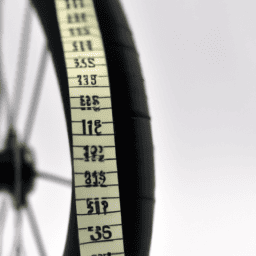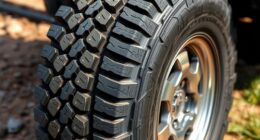As someone who delivers for Uber Eats, I’ve discovered numerous advantages to transitioning from using a car to a bike. It’s not only better for the environment, but it also makes maneuvering through congested traffic and busy streets much simpler. Though, the initial shift from driving to cycling can appear intimidating.
In this article, I will share my experience and provide tips on how to successfully make the switch to a bicycle on Uber Eats.
First, it is important to assess your delivery area to determine if biking is a feasible option. Take note of the distance and terrain of your delivery routes. If the routes are too long or hilly, biking may not be the best option. However, if the routes are shorter and relatively flat, biking can be a great alternative to driving.
Additionally, check if there are bike lanes or dedicated bike routes in your area to ensure safe and efficient travel. Once you have determined that biking is a viable option, it’s time to choose the right bike and ensure safety on the road.
Key Takeaways
- Switching to a bicycle on Uber Eats can help reduce your carbon footprint, save money, and navigate through traffic more easily.
- Successfully transitioning to a bicycle requires assessing the delivery area for feasibility, checking demand and traffic conditions, selecting an appropriate bike, ensuring safety on the road, and optimizing deliveries for efficiency.
- Drawbacks to consider include potential weather-related delays and physical strain on the body.
- It is important to take care of your physical health and plan ahead for potential delays when making the switch to a bicycle on Uber Eats.
Assess Your Delivery Area
You’ll need to take a look at your delivery area to see if switching from a car to a bicycle on Uber Eats is feasible.
The first thing to evaluate is the demand for bicycle deliveries in your area. Check if there are already many bicycle delivery partners in the area, and if there’s a high demand for bicycle deliveries. If the demand is low, it may not be worth the investment to switch to a bicycle.
Another important factor to consider is traffic conditions. You’ll want to check if the streets in your delivery area are safe for bicyclists, and if there are bike lanes available. Heavy traffic and dangerous road conditions can make it difficult and unsafe to deliver on a bicycle.
Once you’ve assessed these factors, you can determine if switching to a bicycle on Uber Eats is a viable option. Now, let’s move on to choosing the right bike.
Choose the Right Bike
Selecting the appropriate bike is crucial when transitioning to delivering food. Before choosing a bike, it’s important to consider factors such as bike maintenance, fit, and comfort. Here are a few things to keep in mind when selecting the right bike:
-
Maintenance: Look for a bike that’s easy to maintain and repair. This’ll save you time and money in the long run. Consider bikes with internal gears and hub brakes, which require less maintenance than traditional derailleur gears and rim brakes.
-
Fit: Choose a bike that fits your body type and riding style. This’ll ensure that you’re comfortable while riding, which is important for long hours on the road. Consider factors such as frame size, saddle height, and handlebar position.
-
Comfort: Look for a bike with features that enhance your comfort, such as suspension, padded seats, and ergonomic grips. These features’ll help reduce fatigue and prevent injuries.
Ensuring your safety on the road is crucial when delivering food. Therefore, in the next section, we’ll discuss how to stay safe while cycling on the road.
Ensure Safety on the Road
To keep myself and others safe while delivering food by bike, I always make sure to follow the road rules. This means staying in designated bike lanes whenever possible, using hand signals to indicate my turns, and obeying traffic signals and signs.
It’s also important to be aware of my surroundings and anticipate any potential hazards, such as pedestrians stepping out into the bike lane or cars making sudden turns. In addition to following road rules, it’s crucial to wear protective gear while biking for delivery. This can include a helmet, reflective clothing, and sturdy shoes.
Not only does this gear help prevent injuries in case of a fall or accident, but it also makes me more visible to drivers and pedestrians. By taking these necessary precautions, I can ensure a safe and successful delivery every time.
As I move on to the next section about optimizing my deliveries, I’ll keep in mind the importance of staying safe on the road.
Optimize Your Deliveries
Believe it or not, there’s a way to make your deliveries even more efficient than they already are. By optimizing your deliveries, you can ensure that you’re taking the most efficient routes and managing your time effectively. Here are a few tips to help:
-
Use a delivery app that allows you to plan your route ahead of time. This way, you can plan out your deliveries in the order that makes the most sense, cutting down on backtracking and unnecessary driving.
-
Take advantage of off-peak hours. If you’re able to make deliveries during less busy times of the day, you’ll be able to get around more quickly and efficiently.
-
Keep an eye on traffic patterns. If you know that a certain area is prone to heavy traffic during certain times of day, try to avoid it if possible.
-
Always be prepared. Make sure you have everything you need for your deliveries before you hit the road, including any necessary paperwork, delivery bags, and equipment.
-
Consider using a bicycle for some of your deliveries. Not only is it a more environmentally-friendly option, but it can also be faster in some cases, especially if you’re delivering in a busy urban area.
By following these tips, you can ensure that you’re making the most of your deliveries and maximizing your efficiency.
Now, let’s take a look at how you can enjoy the benefits of switching from a car to a bicycle for your deliveries.
Enjoy the Benefits
You can reap the rewards of opting for a more eco-friendly and efficient mode of transportation for your deliveries by using a bicycle. Not only will you be reducing your carbon footprint, but you’ll also be able to navigate through traffic more easily and save money on gas and car maintenance. However, there are also some drawbacks to consider, such as the potential for weather-related delays and the physical strain on your body.
To help you weigh the benefits versus the drawbacks, here’s a table outlining the impact on the environment and your wallet:
| Benefits | Drawbacks |
|---|---|
| Reduces carbon footprint | Potential for weather-related delays |
| Saves money on gas and car maintenance | Physical strain on your body |
| Navigates through traffic more easily | Limited carrying capacity |
Overall, the benefits of using a bicycle for your Uber Eats deliveries outweigh the drawbacks. Not only will you be doing your part to help the environment, but you’ll also be able to save money and navigate through traffic more efficiently. Just be sure to take care of your physical health and plan ahead for any potential weather-related delays.
Frequently Asked Questions
What is the process for registering as a bicycle delivery partner with Uber Eats?
Becoming a bicycle partner with Uber Eats is a breeze! First, check the eligibility criteria and submit an application. Then, complete the registering process and start delivering with ease.
Are there any special requirements for the type of bag or container used to transport food on a bicycle?
When delivering food on a bicycle for Uber Eats, reusable containers are recommended to reduce waste. It’s important to follow food safety guidelines and use insulated bags to keep food at the proper temperature.
How does Uber Eats handle orders that are too large or heavy to be transported on a bicycle?
When handling oversized orders, Uber Eats delivery partners are trained to use alternative modes of transportation, such as cars or motorcycles. This ensures timely and efficient delivery while maintaining the safety of the delivery partner and the food.
What steps can be taken to minimize the risk of theft or damage to the bicycle during deliveries?
To minimize theft or damage during bicycle deliveries for Uber Eats, I use locking techniques such as a sturdy U-lock and park in well-lit areas. I also protect my bike from weather with a waterproof cover.
Is there any additional insurance coverage needed for bicycle delivery partners on Uber Eats?
Do I need bicycle insurance as a delivery partner on Uber Eats? Yes, Uber provides liability insurance, but additional coverage may be required depending on the state and personal preference. Check with your insurance provider for coverage requirements.
Conclusion
In conclusion, switching from car to bicycle for Uber Eats delivery can be a smart move for both your physical health and the environment. It requires some planning, such as assessing your delivery area and choosing the right bike, but the benefits are worth it.
Not only will you save money on gas and maintenance, but you’ll also reduce your carbon footprint and get a great workout while earning money. Did you know that according to a study by the National Association of City Transportation Officials, using a bicycle for delivery can be up to 50% faster than a car in urban areas? This is due to the ability to navigate through traffic and avoid congestion, making it a more efficient mode of transportation for short distances.
Additionally, bicycles are much cheaper to maintain than cars, with less wear and tear on the vehicle and no need for gas. Overall, switching to a bicycle for Uber Eats delivery can be a win-win situation for both you and the environment.
By following the steps outlined in this article, you can ensure a safe and enjoyable experience while reaping the benefits of a healthier lifestyle and a more sustainable future.









